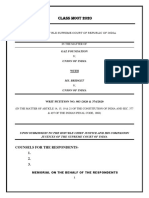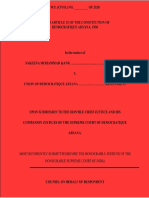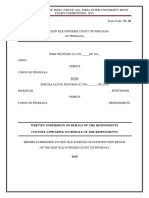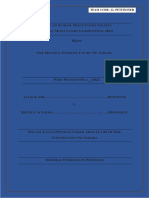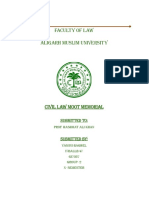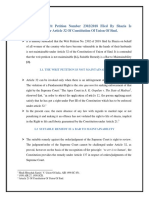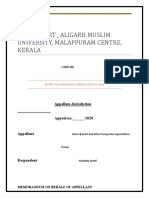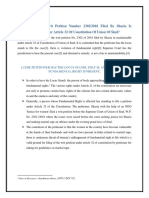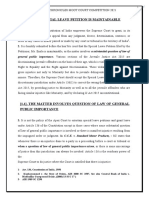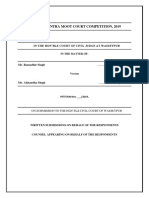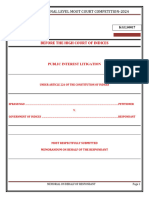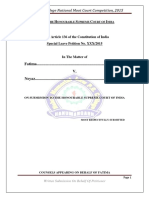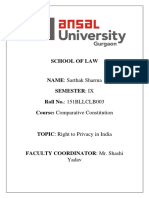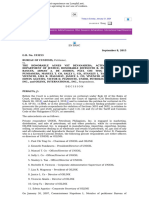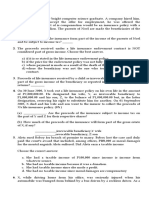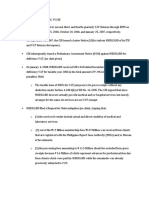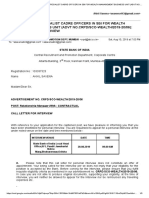0% found this document useful (0 votes)
205 views7 pagesMoot Problem.
Here are the key issues in this case in light of the Supreme Court's judgment recognizing a fundamental right to privacy in Puttaswamy v. Union of India:
1. In Naz Foundation v. Govt. of NCT of Delhi, the Delhi High Court had ruled Section 377 unconstitutional with respect to consensual same-sex acts between adults, recognizing a zone of privacy. However, this was overturned by the Supreme Court.
2. In Puttaswamy, the Supreme Court established privacy as a fundamental right under Article 21. This has implications for revisiting the constitutionality of Section 377 which criminalizes consensual same-sex acts in private.
3. Section 377 violates the right to privacy of
Uploaded by
Mayuresh IngaleCopyright
© © All Rights Reserved
We take content rights seriously. If you suspect this is your content, claim it here.
Available Formats
Download as PDF, TXT or read online on Scribd
0% found this document useful (0 votes)
205 views7 pagesMoot Problem.
Here are the key issues in this case in light of the Supreme Court's judgment recognizing a fundamental right to privacy in Puttaswamy v. Union of India:
1. In Naz Foundation v. Govt. of NCT of Delhi, the Delhi High Court had ruled Section 377 unconstitutional with respect to consensual same-sex acts between adults, recognizing a zone of privacy. However, this was overturned by the Supreme Court.
2. In Puttaswamy, the Supreme Court established privacy as a fundamental right under Article 21. This has implications for revisiting the constitutionality of Section 377 which criminalizes consensual same-sex acts in private.
3. Section 377 violates the right to privacy of
Uploaded by
Mayuresh IngaleCopyright
© © All Rights Reserved
We take content rights seriously. If you suspect this is your content, claim it here.
Available Formats
Download as PDF, TXT or read online on Scribd
/ 7

